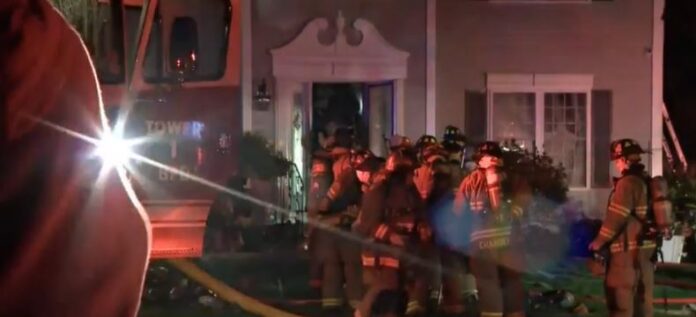When a fire breaks out in a quiet community, it doesn’t just send smoke into the sky it sends a wave of worry through every resident who calls that place home. That was the case this week in Bedford, where an attic fire rattled neighbors and left officials searching for answers.
Flames in the Attic: What Happened in Bedford?
It started like so many fire stories do, suddenly and unexpectedly. Local firefighters were dispatched after reports of heavy smoke rising from the top floor of a Bedford home. By the time crews arrived, the attic was already glowing with flames.
Neighbors looked on anxiously as responders rushed to contain the blaze. Sirens echoed through the block, and for a moment, many feared the entire home would be lost. Fortunately, thanks to a fast and coordinated response, firefighters managed to keep the flames from spreading beyond the attic.
Officials confirmed that no one was injured, but the cause remains under investigation. For now, all that’s clear is that quick action kept a frightening situation from becoming a tragedy.
If you’ve ever been woken up by the smell of smoke or even seen a neighbor’s home catch fire, you know the chill that runs through your body. Fires in attics are especially dangerous because they often go unnoticed until they’ve grown strong enough to break through the roofline.
The Mystery of Attic Fires
Why do attic fires feel so unpredictable? For one, attics are rarely visited. Weeks or months can pass without homeowners setting foot inside, which means wiring issues, insulation problems, or hidden heat sources can smolder unnoticed.
Another challenge is ventilation. Attics are designed to breathe; vents in the eaves and roof allow air circulation. But in a fire, that airflow acts like a bellows, feeding the flames with oxygen and giving them more power to spread.
That’s why, when firefighters respond to an attic blaze, every minute counts.
Community Response and Reassurance
Bedford officials were quick to reassure residents that there was no immediate threat beyond the affected home. Still, the fire left many asking a familiar question: “Could it happen to me?”
When something as unsettling as an attic fire makes headlines, it serves as a mirror for the community. People start looking up at their own roofs, thinking about the boxes of old clothes or holiday decorations piled up above their heads, and wondering what risks might be hiding in the dark corners of their homes.
And honestly, that’s not a bad thing. A little fear, when channeled the right way, can spark action, and action is what keeps homes safe.
Lessons from Bedford: Fire Safety Awareness
What really stands out here is the reminder that attic fires don’t discriminate. They can start in historic homes or brand-new builds. They can ignite from faulty wiring, overheated equipment, or something as simple as a misplaced candle left too close to storage boxes.
So, what can families do to reduce their risks?
-
Check Your Wiring: Old or frayed wires are one of the top culprits in attic blazes. Have an electrician inspect any visible wiring if your home is more than a few decades old.
-
Mind Your Storage: Cardboard boxes, old papers, and clothing all act as fuel. Store items in plastic containers and keep them away from light fixtures or outlets.
-
Install Smoke Alarms: Many people forget about the attic when placing smoke detectors. Adding one upstairs could mean the difference between early warning and too late.
-
Routine Inspections: Make it a habit to glance around your attic a few times a year. Look for signs of pests chewing wires, unusual smells, or scorch marks.
If you’ve ever thought, “I’ll check it later,” remember that later sometimes never comes until it’s too late.
Why Fire Safety News Matters
Some might shrug and say, “It was just one attic fire.” But when you step back, the bigger picture is clear. Every fire incident news story holds a lesson—not just for the people directly involved, but for anyone paying attention.
Think of it this way: every home has its vulnerabilities. Sometimes they’re obvious, like a gas stove or a space heater in winter. Other times, they’re hidden, tucked away in corners we rarely think about—like the attic in Bedford.
By shining a light on these incidents, local reporters and fire safety advocates remind us that prevention is possible. It’s not about living in fear of fire—it’s about being smart, aware, and prepared.
Essential Takeaways for Readers
If there’s one thing Bedford’s attic fire teaches us, it’s that preparedness is everything. Fires don’t send a warning before they start. They just happen.
Here’s what you can do today:
-
Walk through your home and ask yourself, “Where would a fire likely start here?”
-
Make sure every level of your home—including the attic and basement—has a working smoke alarm.
-
Talk to your family about an evacuation plan. It may sound dramatic, but in the middle of a smoky night, clarity saves lives.
-
Stay connected with local fire safety updates. Sometimes, hearing about a neighbor’s close call is the push we need to make our own homes safer.
Closing Thoughts: A Community Reminder
So, what can we learn from this attic fire in Bedford? That danger often hides in the places we least expect. That fast action from firefighters prevents tragedies. And that every homeowner has the power to lower their risk with simple steps.
Fires will always make the news but whether they remain small incidents or become full-blown disasters often depends on preparedness.
The people of Bedford were fortunate this time. No lives were lost, and the damage was contained. But the next time you climb the stairs to your attic, take a moment to think about the lessons this fire left behind. Safety starts with awareness, and awareness begins with stories like this one.

